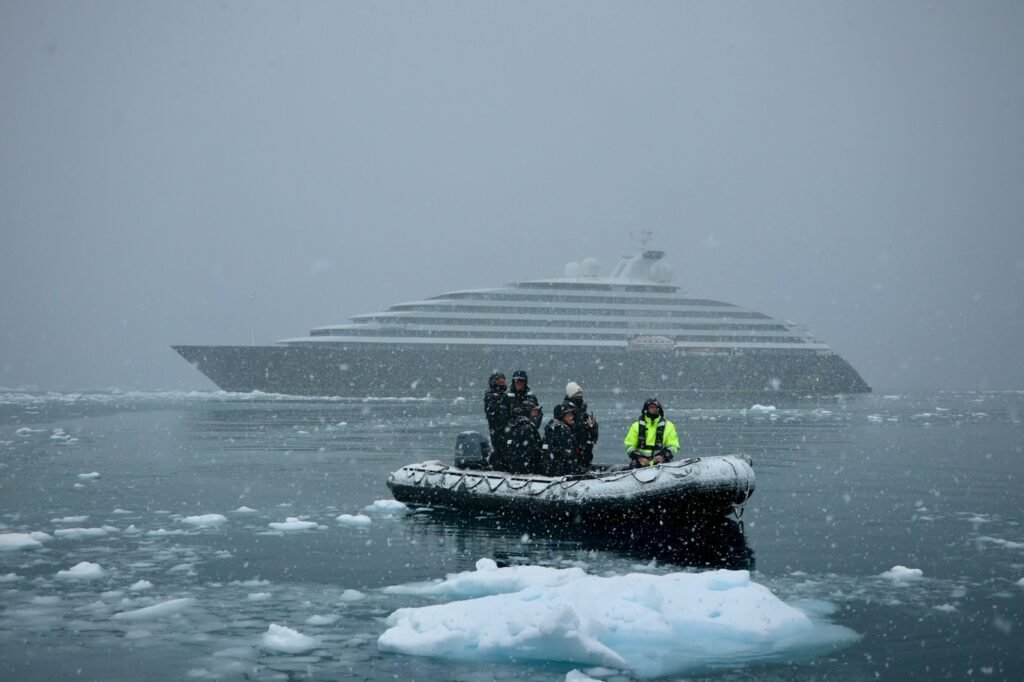Ever wondered if inflatable kayaks are as sturdy as they claim to be? Many kayak enthusiasts have shared this curiosity, especially those considering an upgrade from the traditional hard-shell designs.
Yes, indeed! Inflatable kayaks prove their durability time and again. Made with high-quality materials and cutting-edge technology, these water vessels withstand challenging conditions while providing optimal performance.
Curious about how exactly these inflatables hold up against the elements? Stick around as we take a deeper look into what makes inflatable kayaks not just durable but also a worthy investment for your next water adventure.

What Makes Inflatable Kayaks Durable?
Inflatable kayaks are renowned for their durability, thanks to the combination of high-quality materials and innovative construction techniques.
They’re designed to withstand harsh conditions, ensuring a safe and enjoyable paddling experience. Let’s dig deeper into what makes these flexible water vessels so resilient.
The Role of High-Quality Materials
The durability of inflatable kayaks primarily hinges on the quality of materials used in their manufacture. Most often, they are made from tough synthetic substances like PVC (Polyvinyl Chloride), Hypalon, or Nitrylon.
These materials offer excellent resistance against punctures and abrasions – common risks when kayaking in rough waters or near rocky shores.
Innovative Construction Techniques
Alongside top-notch materials, advanced construction methods contribute significantly to the sturdiness of inflatable kayaks. For instance, most modern inflatables use drop-stitch technology in their floors.
This technique involves connecting two pieces of material with thousands of fine threads, allowing for higher inflation pressures that result in a rigid structure without compromising flexibility.
Maintenance Practices
Lastly, how you care for your inflatable kayak influences its longevity too. Regular cleaning after usage helps prevent material degradation caused by saltwater or dirt particles. Also, storing it properly when not in use – deflated and kept away from direct sunlight – can prolong its useful life substantially.
The Role of Material in the Durability of Inflatable Kayaks
The material used in constructing an inflatable kayak plays a pivotal role in determining its durability. High-quality materials, coupled with excellent craftsmanship, can significantly enhance the lifespan and performance of these watercrafts.
Let’s dig deeper into how different types of materials affect the overall durability and functionality of inflatable kayaks.
High-Density Polyvinyl Chloride (PVC)
One commonly used material in making inflatable kayaks is high-density polyvinyl chloride (PVC). This material is popular due to its resistance to abrasion, flexibility, and cost-effectiveness.
However, PVC-made kayaks are less resistant to extreme temperatures and UV rays compared to other materials. Therefore, regular maintenance like proper storage away from direct sunlight is necessary for prolonging their lifespan.
Hypalon
Hypalon is another frequently utilized material which offers superior resistance against harsh environmental elements such as UV light and chemicals.
Despite being more expensive than PVC, Hypalon ensures longer-lasting durability for your inflatable kayak.
Nitrylon
Nitrylon is a heavy-duty synthetic rubber that provides enhanced puncture-resistance compared to PVC.
Although it adds weight to the kayak making it slightly harder to transport, Nitrylon significantly increases the toughness and longevity of your vessel.
In essence, choosing an inflatable kayak made from top-tier materials will not only ensure better performance but also provide long-term use.
Here are some reasons why investing in high-quality material matters:
- Enhanced Durability: Superior quality materials offer higher resistance against wear-and-tear.
- Better Performance: These materials often provide better buoyancy and handling capabilities.
- Ease-of-Maintenance: High-grade materials generally require less maintenance and offer easier repair options.
Does Price Influence the Durability of Inflatable Kayaks?

Yes, indeed, price does play a significant role in determining the durability of inflatable kayaks. Typically, higher-priced inflatable kayaks are made from superior materials and advanced construction techniques that contribute to their longevity.
These premium kayaks often come with added features like UV resistance and puncture-proof design which further enhance their lifespan.
The Link between Price and Quality
Let’s dig deeper into this connection between price and durability. Generally speaking, when you invest more money in an inflatable kayak, you’re not just paying for a brand name or aesthetics; you’re paying for quality material and craftsmanship.
Higher-end models usually feature heavy-duty PVC or Hypalon material known for its exceptional strength and resilience against harsh weather conditions and rough usage.
Low-Cost Versus High-Cost Inflatable Kayaks
Here are some key differences to consider when comparing low-cost to high-cost inflatable kayaks:
- Material: Cheaper models typically use thinner materials that can easily get punctured or damaged.
- Construction: Expensive kayaks often employ advanced construction methods such as drop-stitch technology for enhanced firmness and stability.
- Lifespan: A pricier kayak tends to last longer due to its superior build quality.
However, it’s crucial to understand that while there is generally a correlation between price and durability, it doesn’t always hold true. Some budget-friendly options offer impressive resilience at a fraction of the cost.
Tips on Choosing Durable Inflatable Kayak
When selecting an inflatable kayak based on durability rather than just price alone, consider these aspects:
- Material: Opt for kayaks made from robust materials such as PVC, Hypalon, or Nitrylon.
- Seam Construction: Kayaks with welded seams are usually more durable than those with glued seams.
- User Reviews: Customer reviews can provide valuable insights into the durability of a kayak based on real-world usage.
Tips to Maintain and Enhance the Durability of Your Inflatable Kayak

Proper Inflation
One of the key aspects of maintaining an inflatable kayak is ensuring proper inflation. Overinflating can cause stress on the seams, leading to potential damage over time.
On the other hand, underinflation can result in poor performance and increased wear and tear during use. Hence, always ensure that your kayak is inflated according to manufacturer’s guidelines.
Regular Cleaning
An integral part of preserving your inflatable kayak involves regular cleaning after each use. Rinse with fresh water to remove salt, sand or any debris which could potentially scratch or degrade the material over time.
Dry Before Storage
Never store an inflatable kayak when it’s wet as this creates an environment conducive for mold and mildew growth which can deteriorate its material quality. Always ensure that it’s completely dry before packing away.
Avoid Sun Exposure
Direct sunlight exposure causes UV degradation which significantly reduces lifespan of your inflatable kayak. When not in use, keep it in a shaded area or use a UV protectant spray for added protection against harmful rays.
Real-Life Experiences: Stories from Users About the Durability of Their Inflatable Kayaks
Inflatable kayaks have been gaining popularity due to their portability and affordability. But how durable are they in reality? Many users have shared their experiences, providing us with valuable insights about these watercrafts’ durability. Let’s dig deeper into their stories.
User Story 1 – The Unplanned Rapids Adventure
John, an outdoor enthusiast, shared his experience when he accidentally ended up in Class III rapids with his inflatable kayak. He was surprised by the kayak’s resilience as it survived the rough waters without any damage or puncture. This incident proved that good quality inflatable kayaks can withstand harsh conditions.
User Story 2 – The Rocky Shore Encounter
Susan is another user who had a memorable experience with her inflatable kayak on a rocky shoreline. Her kayak scraped against sharp rocks multiple times but remained unscathed. She attributed this durability to the tough PVC material used in its construction.
User Story 3 – Long-term Durability Testimony
Then there’s Alex who has been using his inflatable kayak for more than three years now. Despite regular use and exposure to different weather conditions, he reported that it still performs like new and shows no signs of deterioration.
From these real-life experiences, we see that high-quality inflatable kayaks are indeed durable and can withstand varying environmental conditions over time. However, keep in mind that care and maintenance also play significant roles in preserving your gear’s lifespan.
FAQs
Can inflatable kayaks withstand rough waters?
Yes, high-quality inflatable kayaks are designed to be extremely tough and can easily handle rough waters. They are made from durable materials such as PVC and Nitrylon.
What is the longevity of an inflatable kayak?
The lifespan of an inflatable kayak largely depends on its quality and how well it’s maintained. Generally, a well-cared-for inflatable kayak can last for 5-10 years or even longer.
How resistant are inflatable kayaks to punctures?
Inflatable kayaks are surprisingly resistant to punctures. They’re typically constructed with multiple layers of heavy-duty material that effectively prevent tears and leaks.
Do Inflatable Kayaks require frequent repairs?
No, if properly taken care of, inflatable kayaks do not require frequent repairs. However, like any equipment, they may need occasional maintenance or patching in case of a minor puncture.
